- Barbastella
- Eptesicus
- Myotis
- Nyctalus
- Pipistrellus
- Vespertilio
Brandt's bat Myotis brandtii
Brandt's bat (Myotis brandtii) and whiskered bat (Myotis mystacinus) look very similar and are often found in the same habitat. They were not described as separate species until 1970. A third species of the whiskered bat group, the Alcathoe Whiskered bat (Myotis alcathoe), was even described as late as 2001. To be able to distinguish all 3 species morphologically, it is necessary to look at certain dental characteristics with the help of a magnifying glass.
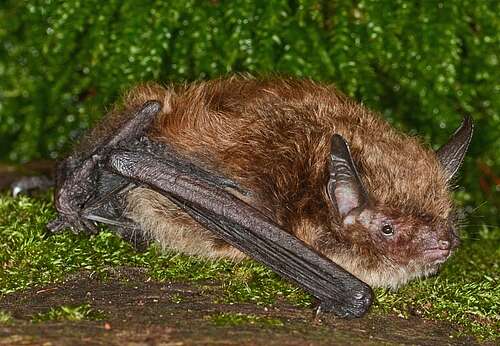
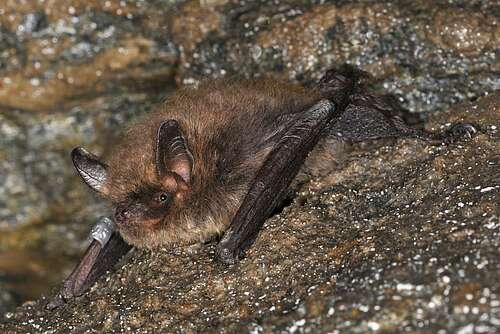
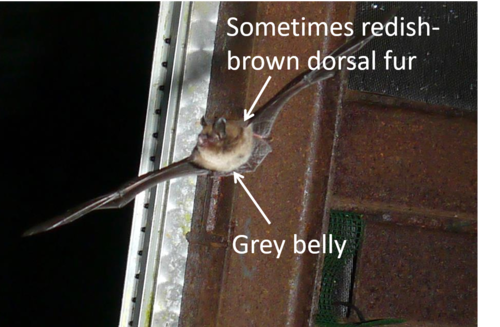
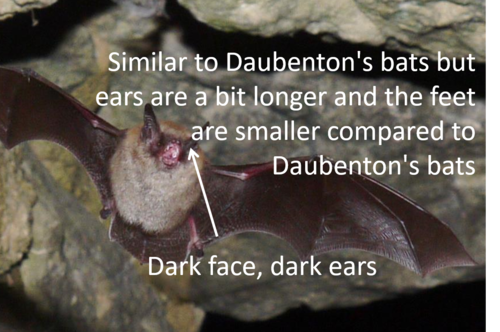
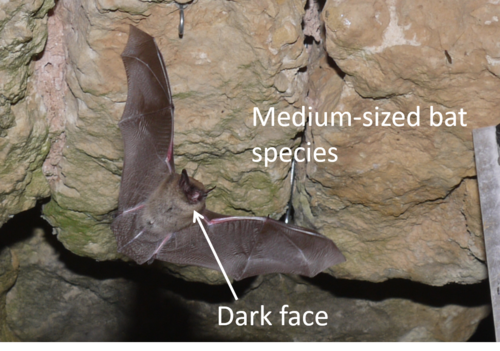
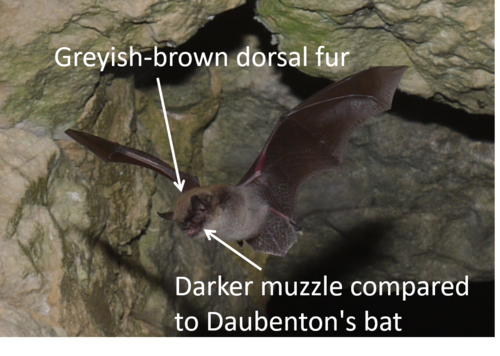
| habitat description | Strongly attached to forests, also to forest edges, aisles, water bodies, wetlands and bogs, rarely meadows or settlements. |
| quarters | Nursery roosts of about 20 individuals in tree cavities, behind bark solution, shutters, facades and house crevices in areas close to forests, occasionally narrow bat or bird boxes. Hibernates underground in caves and tunnels from October to April, rarely migrating further distances. |
| reproduction | Young born in June, independent by late July. Mating occurs at shoals and in winter roosts. |
| size | - Head-torso length: 39 - 51 mm - Forearm length: 33 - 38 mm - Wingspan: 190 - 240 mm |
| weight | 5–7 g. |
| color/fur | Relatively long coat. Dark gray to medium brown on top, somewhat lighter on underside. Become lighter and lighter with age until their coat develops shiny golden tips from about 7 years of age. Dark to medium brown muzzle, which is heavily coated with hair. Brown ears, lightened on the inside in contrast to the lesser bearded bat. |
| ear shape | Relatively long, with 4 - 6 transverse folds. Lanceolate tragus, about half the length of the ears. |
| wing shape | Narrow and relatively pointed. |
| flight | Skilled fliers, frequently changing flight height. Fly up and down along trails and aisles. Forages along hedgerows and woods. Fly from just above the ground to the canopy of trees. |
| ultrasonic calls | Frequency modulated calls with a start frequency at 65 - 95 kHz and a finish frequency at 26-36 kHz. Main frequency at 38 - 50 kHz, often at 42 kHz. Dry, relatively regular calls resembling the ticking of a clock. Differentiation from the calls of the whiskered bat is practically impossible, also difficult to differentiate from Daubenton's and Natterer's bats. |
| endangerment | Lack of suitable tree hollows or other roosts as well as fragmentation of habitats, e.g. by roads, as a source of danger. Red List of Germany (2020): Not endangered. IUCN(2019): Least Concern. |